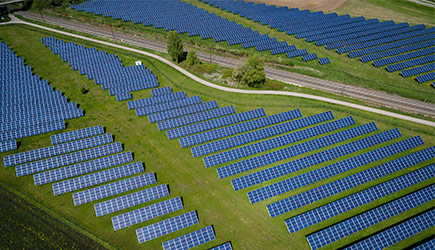
Renewable energies on the rise: why storage and infrastructure are more crucial than ever
Electricity is increasingly being generated from renewable energies worldwide, but fossil fuels will continue to make a significant contribution to emissions until the end of the decade, according to the forecasts in this year's World Energy Outlook. There is also a lack of necessary measures and infrastructure to cope with the change.
Every year, the International Energy Agency's (IEA) World Energy Outlook 2024 (WEO) analyzes global developments in the energy sector and draws up forecasts based on the current market situation and political framework conditions. It examines what they mean for energy security, emissions and economic development.
In this year's report, which was published in October, the IEA assumes that the consumption of oil, coal and natural gas will continue to increase until the end of the decade, reach its peak and only then gradually decline. According to the report, an oversupply of liquefied natural gas (LNG) and crude oil is expected in the second half of this decade. At the same time, the supply of renewable technologies that are driving the energy transition is growing, particularly in the areas of solar energy and batteries. According to the WEO report, the share of renewables in global electricity generation is set to rise to around 60 percent by 2050.
As a result, energy prices could fall for the time being, consumers could be relieved and governments could be given the opportunity to reduce subsidies for fossil fuels. On the other hand, according to the European Investment Bank, the new structures are also accompanied by new challenges that need to be overcome.
Energy storage and electricity grids: key to implementing the energy transition
As positive as the increase in renewable energies in electricity generation is, it also brings with it major challenges. As electricity generation from solar and wind energy is weather-dependent and fluctuating, it is not uncommon for electricity production to exceed demand at times. It is therefore essential to store surplus energy in order to compensate for bottlenecks in times of low production. Energy storage is therefore indispensable if Europe wants to achieve its climate targets.
In order to create a flexible energy system based on renewable energies, the WEO report also emphasizes the importance of investing in electricity grids. To this end, the European Commission drew up an “EU Action Plan for Networks” last year, for example. However, this makes it clear that the approval procedures for expansion take four to ten years, and even eight to ten years for high-voltage lines. In addition, the need for investment in the electricity grid is estimated at 584 billion euros by 2030, with a focus on modernizing local distribution grids to make them digital, remotely controllable and cyber-secure.
However, all of these processes need to be accelerated in order to advance the energy transition. According to the report, this is still too often held back by political decision-makers and investors who stabilize the existing energy system instead of investing more in a clean and flexible energy system.
Image: Andreas Gücklhorn on Unsplash
Sources: energiezukunft.eu, jb, 29.10.2024
eib.org, Dawid A. Fusiek and Peter Koh, 15.10.2024













